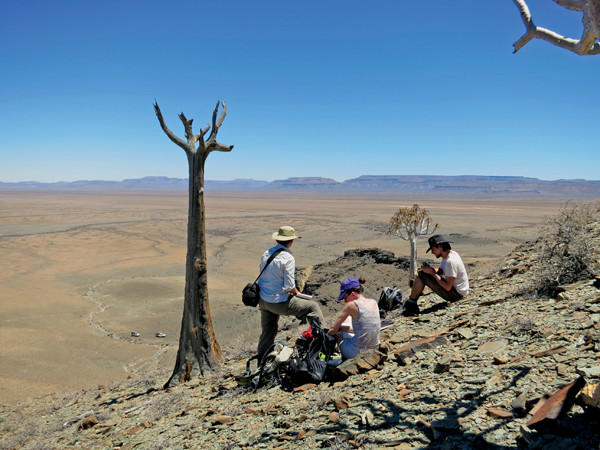
by Sara E. Pratt Tuesday, November 4, 2014

Researchers have discovered a 548-million-year-old reef in southern Namibia. Credit: Rachel Wood.
The Ediacaran Period, which lasted from 635 million to 541 million years ago, is famous for the evolution of soft-bodied organisms that pre-dated the Cambrian Explosion, the relatively brief period during which most of the major animal phyla appeared. Now, Ediacaran-aged animals with skeletons have been found.
In Science, Amelia Penny, a graduate student at the University of Edinburgh in Scotland, and colleagues reported the discovery of an approximately 548-million-year-old reef in Namibia. The oldest previously discovered reefs were about 530 million years old.
The reef was built by Cloudina species — tiny, benthic, filter feeders that produced rigid shells made of calcium carbonate cement. The discovery implies that reef building had been going on for millions of years before the Cambrian Explosion.
“We have found that animals were building reefs even before the evolution of complex animal life,” said Rachel Wood, professor of carbonate geosciences at the University of Edinburgh, in a statement. This suggests “that there must have been selective pressures [before] the Cambrian Period that we have yet to understand.”
© 2008-2021. All rights reserved. Any copying, redistribution or retransmission of any of the contents of this service without the expressed written permission of the American Geosciences Institute is expressly prohibited. Click here for all copyright requests.